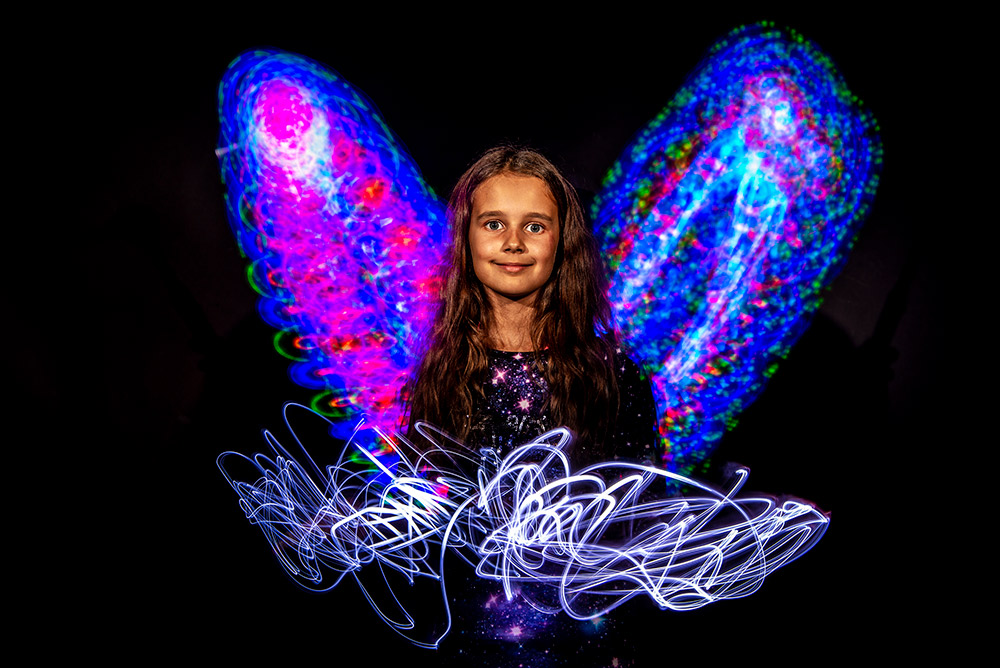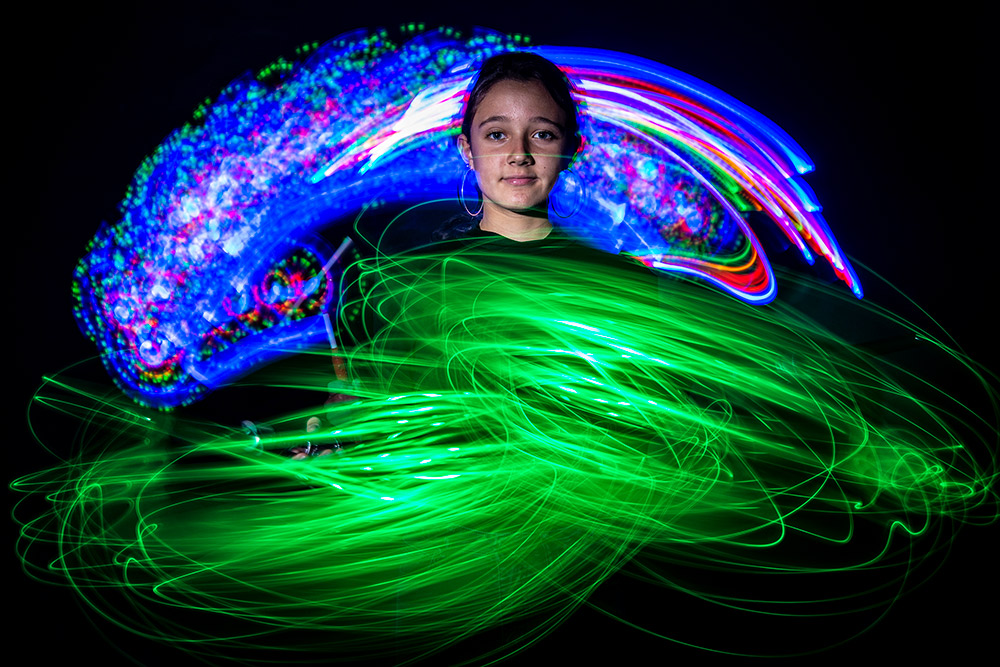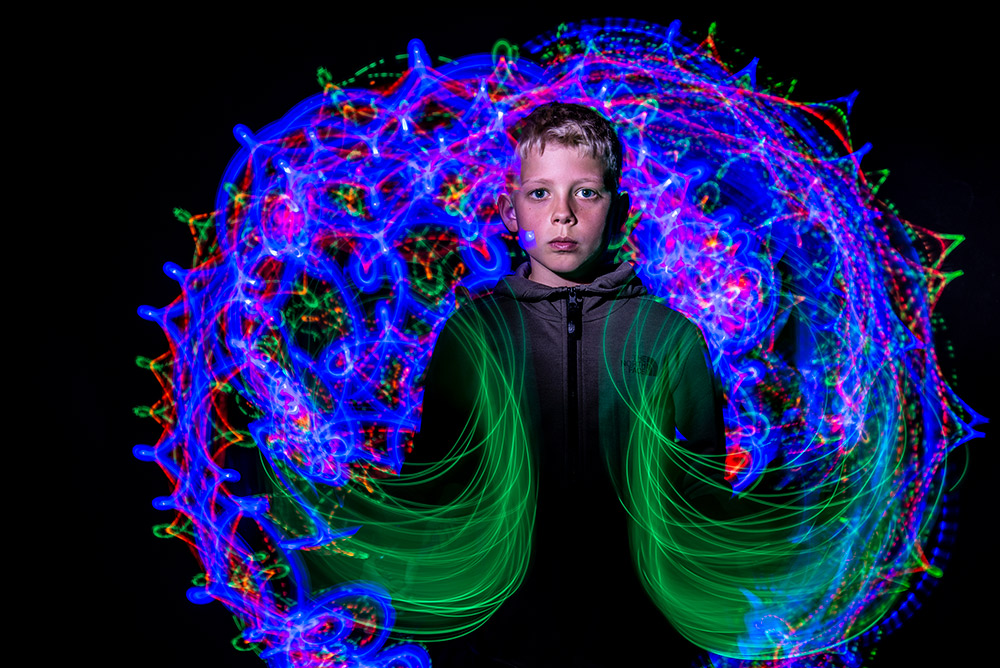Light painting may seem niche, but it can work with a range of genres including portraits of models and kids, while also transforming landscape shots. Tracy Calder gets tips and advice from three experts
Light painting tips
Kim von Coels
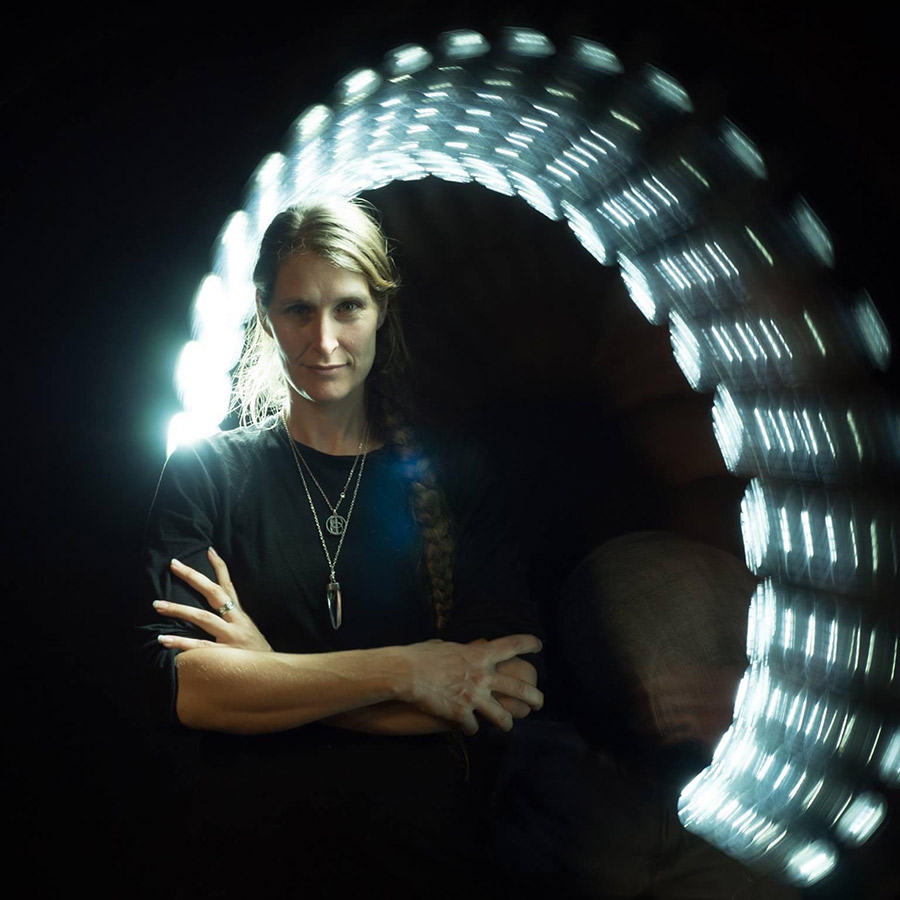
Kim von Coels is an accomplished light painter and photographer, who originally trained at St Martin’s School of Art. Kim recently published a book of her creative photography entitled The Colour of Light, which is available from www.heartofthetribe.com, a gallery in Glastonbury where she works and sells images. She also supplied this issue’s cover. To see more of her work, visit www.thekrumbleempire.com and Instagram: @krumblecreations
Light painters often stress the importance of play when it comes to creating successful images and Kim von Coels is a wonderful example of what can be achieved when you enjoy the process. ‘It’s always an experiment,’ she urges. ‘Even when you become familiar with the tools and effects, the unpredictability of the movement of the human body means there are always surprises. The most enjoyable shoots are the ones when you try out new ideas and they are successful.’
Kim fell in love with light painting after spending a few nights experimenting with long exposures with a group of friends in an old industrial building. Soon afterwards, she discovered the light painting community online and was blown away by the quality and creativity of work on display. ‘I never looked back,’ she explains.
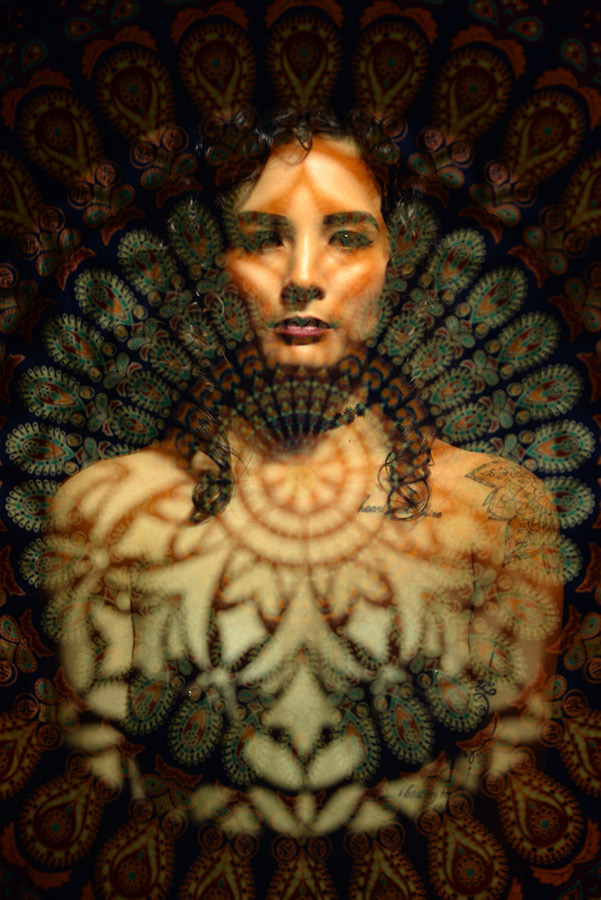
Ria – stencil portrait collaboration with Dominic Bell. ‘Created using a stencil and two small LED torches, one with a warm filter’ 1/15sec at f/7.1, ISO 200. Image: Kim von Coels
Most of her work includes a human form, and many of her images are the result of teamwork. ‘I work both in the studio and on location. Much of my work involves collaborating with other light painters so that we can create images that play to each other’s strengths.’ Kim lists her key strengths as, ‘Tasteful studio nudes, working
with stencils, and creating images that tell a story.’
It can help to have a basic idea of what you’re trying to achieve ahead of the shoot – Kim will often have a location, stencil, model, tool or costume in mind – but it’s important to remember that the best images aren’t always the ones you originally set out to create. ‘The magic is in the playing,’ confirms Kim.
Her DSLR of choice is a Nikon D610, paired with a 24-85mm lens. ‘It’s just what I’m familiar with,’ she admits. ‘I don’t think the type of camera you use is particularly important, as long as it has long exposure options and manual settings.’ Obviously, it helps to have an understanding of how shutter speed/aperture/ISO will affect the end result, but no amount of online tutorials can replace learning ‘in the field’.
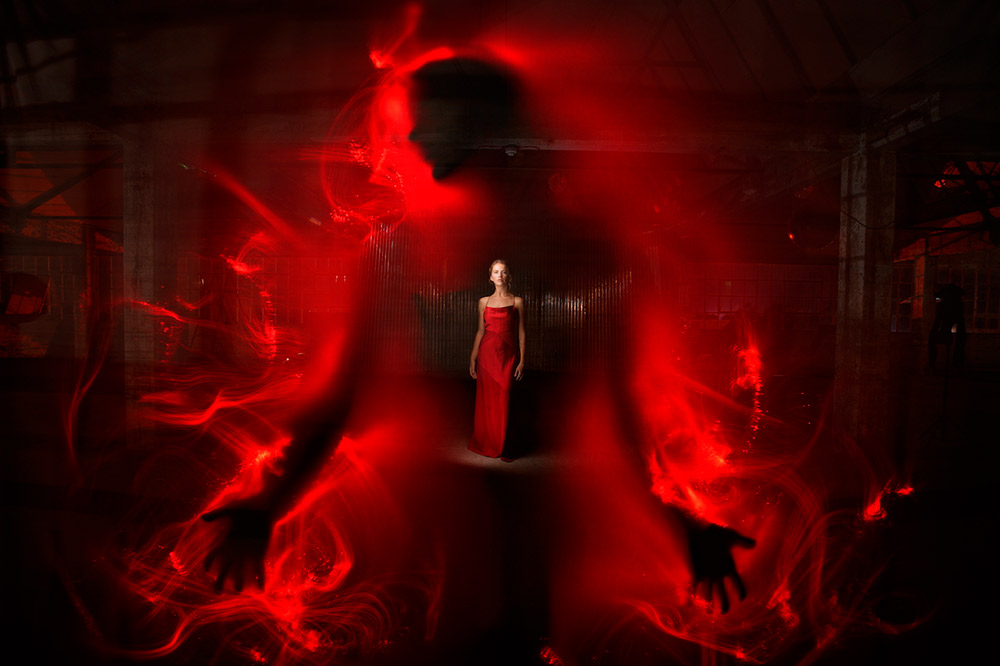
Veronica in Red – collaboration with Phill Fisher. ‘Created using a white sheet, black fibre optic attachment with adaptor and red filter and portrait scanner, with lightpainter torch by Lightpainting Paradise’. Image: Kim von Coels
‘Creating a light painting is about feeling when everything is right,’ says Kim, ‘and you only get that feeling through doing.’ Aside from her DSLR and lens, Kim also uses two remote triggers (one cable and one wireless, the latter of which she finds slightly less reliable in cold conditions). She also uses a lightweight Benro tripod as she often walks long distances to reach her preferred locations.
Kim has a vast collection of both shop-bought and homemade light sources. ‘Once I became more serious about light painting, I invested in high-quality torches and a rechargeable headtorch from LED Lenser.’ Now Kim is sponsored by Lightpainting Paradise which produces, among other things, a torch known as the LightPainter, which offers a variety of strobe settings and brightness options. ‘I’ve learnt over the years that often less is more,’ assures Kim. ‘The simpler and less-complicated images are often the ones that stand out.’
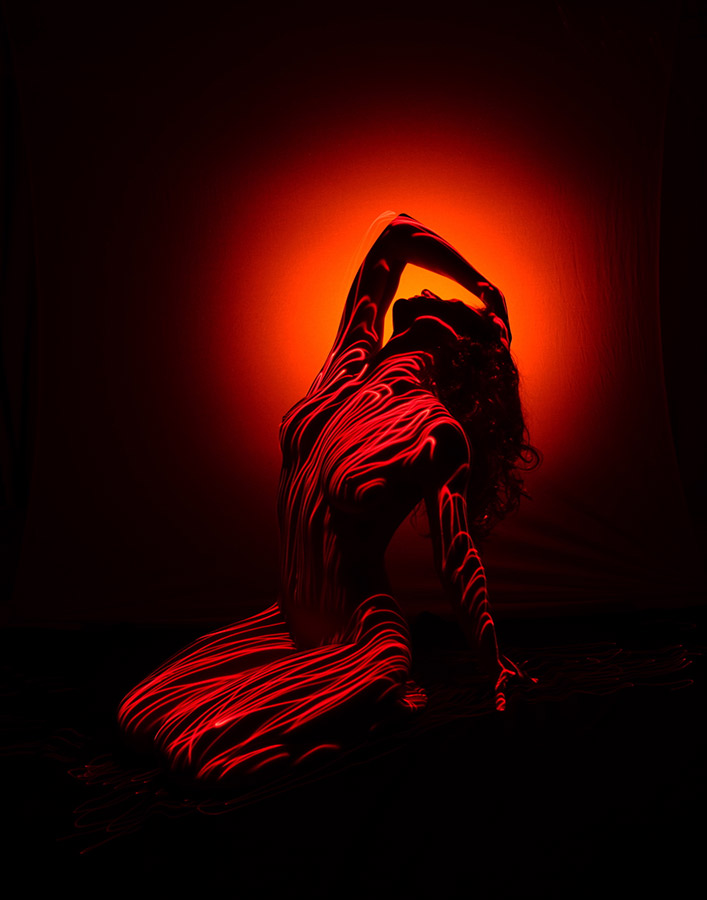
Julie with Lasers. ‘Created using a red laser pen on the body and small handheld flash with red filter behind a white sheet’ 28 secs at f/9, ISO 400. Image: Kim von Coels
Kim’s top tips
- You can watch a hundred tutorials but doing matters. Play around and experiment with your camera and light sources.
- If you’re not 100% happy with your image then do it again, because once you pack up your kit you can never recreate the scenario.
- It’s worth being fussy, because details make an image.
Tobie Loates
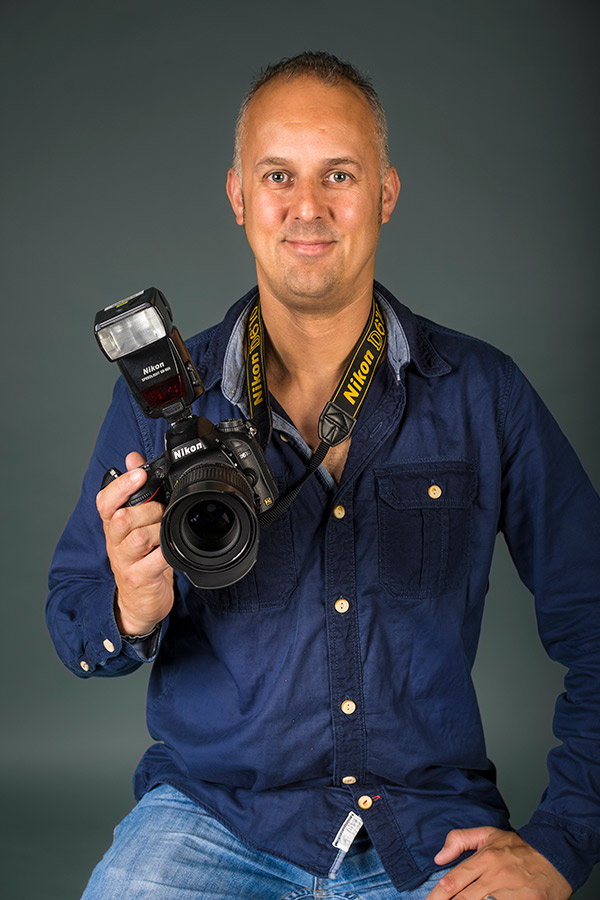
Tobie Loates has two decades’ experience as a commercial photographer and lecturer. He holds a BA (Hons) degree in Photo Media and Design Communication and a post-graduate degree in Education. His portfolio includes award-winning landscape photography as well as wedding, portraiture and street imagery. See more at www.tobieloatesphotography.co.uk and Instagram: @tloates1
The work of light painting duo JanLeonardo Woellert and Joerg Miedza (known as LAPP-PRO) first attracted Tobie to the technique a few years ago. Woellert and Miedza are experts in Light Art Performance Photography (LAPP) where the camera is used to capture a choreographed performance in a single frame. ‘There was an element of fantasy and surrealism within the imagery, combined with an energy and vibrancy that has become the trademark of most good light painting,’ explains Tobie.
As course leader for the Extended Diploma in Photography at Plymouth College of Art, Tobie decided to introduce the technique to students in a series of key workshops throughout the academic year, and the response was encouraging. Tobie and his students mainly concentrate on studio-based light painting, with still life or portraiture as their subject.
‘The right equipment is essential to get the desired effects and this all starts with a good studio space that can be completely blacked out,’ he advises. The next job is sourcing lights for your performance – a task that often sees Tobie scouring the shelves of his local pound shop. ‘October and November are great for sourcing lights as there’s often an abundance of lighting in the shops in the run-up to Bonfire Night and Xmas.’
He finds cheap fairy lights and torches useful, but also experiments with bike lights, fibre optic lights and even spinning LED windmill lights. Tobie often swears by his Nanlite PavoTube. This multi-purpose light offers huge creative control, with adjustable dimming and colour temperature settings. ‘It looks like a lightsaber and can change colour at the flick of a switch,’ he reveals.
When he’s shooting portraits, Tobie likes to use flash, enabling him to keep the subject sharp during the long exposures. ‘One of the other benefits of flash is the many different light adapters and diffusers you can use,’ he adds. ‘For portraits I use a snoot or dish with honeycomb diffuser; this helps to control the direction and radius of the light and stops it from scattering onto the background.’
Tobie’s been a fan of Nikon DSLRs for some time and uses a D610 and a 24-85mm lens for his light painting. ‘I set my camera on a tripod, select an exposure of 10 seconds at f/8 (ISO 100) and use the self-timer,’ he explains. This gives Tobie a good starting point, but the final exposure can be anything between five and 20 seconds. ‘Longer exposures allow the photographer to get involved in the light painting during the shot,’ he explains.
When you’re experimenting with this style of photography it’s advisable to shoot raw as there are often adjustments to be made to exposure, shadows, highlights, colour temperature and clarity. ‘Raw captures significantly more detail than JPEGs, meaning that there’s more scope to edit effectively, without too much noise appearing in the final result.’
As well as the work of LAPP-PRO, Toby is inspired by Mike Muizebelt (www.mikemuizebelt.nl), Cenci Goepel and Jens Warnecke (Lightmark, www.lightmark.de). All the images here were taken with a single Elinchrom BX flash head with dish and honeycomb.
Tobie’s top tips
- Look in pound shops and discount stores during autumn and winter – you can often find cheap lighting tools in the run-up to Fireworks Night and Christmas.
- Play around with different lighting and exposure combinations. Most of all though, have fun!
- Shoot raw – it will allow you to make adjustments without sacrificing quality or introducing too much noise.
Phill Fisher
Phill Fisher discovered light painting in 2014, and was instantly hooked. Initially it was the light itself that provided him with subject matter – he started out creating simple orbs and shapes – but in time he grew to enjoy using light tools to illuminate ruins, memorials, statues, buildings and ‘anything odd’ at night. To see more visit Flickr: Phill Fisher and Instagram: @Phill_fisher
Photography is full of happy accidents and for Phill Fisher one of the most fortuitous occurred in 2014 when he discovered light painting. ‘I was playing around with my old DSLR trying to work out how to take pictures of the sunset,’ he recalls. ‘As my exposure lengthened to 30 seconds I accidentally walked in front of the camera with my torch. It left a line of light across the photo, and from that moment on I was hooked!’
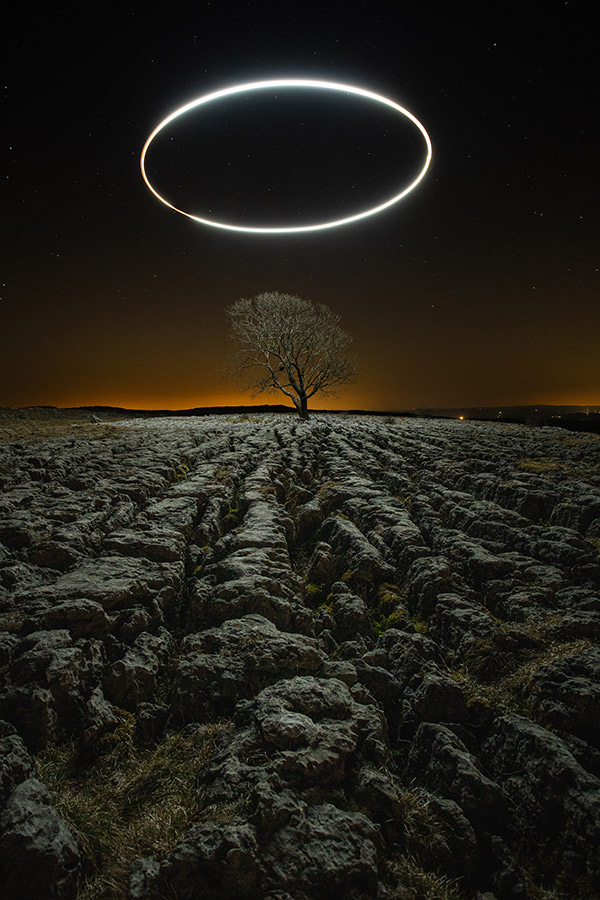
Halo. ‘Here I used lights attached to a drone to light the scene and create the halo’ 21 secs at f/6.3, ISO 1260. Image: Phill Fisher
To begin with, Phill chose to concentrate on light as the actual subject – creating simple orbs and shapes – but as his confidence and technical knowledge increased, he began to place light into the scene, illuminating selected areas. ‘As I was drawn further down the rabbit hole, my addiction grew.’
This addiction led Phill to start experimenting with camera rotation – a technique where the lights in the scene usually remain stationary and the camera itself is moved during the exposure to create a design. ‘I enjoy trying new techniques, mixing them together and seeing what can be done,’ he says. His enthusiasm was further bolstered when he began studying the work of other light painters. With the help of the light painting community, Phill regularly experiments with multiple techniques like mid-exposure lens swapping, lens capping and double exposures in a single frame.
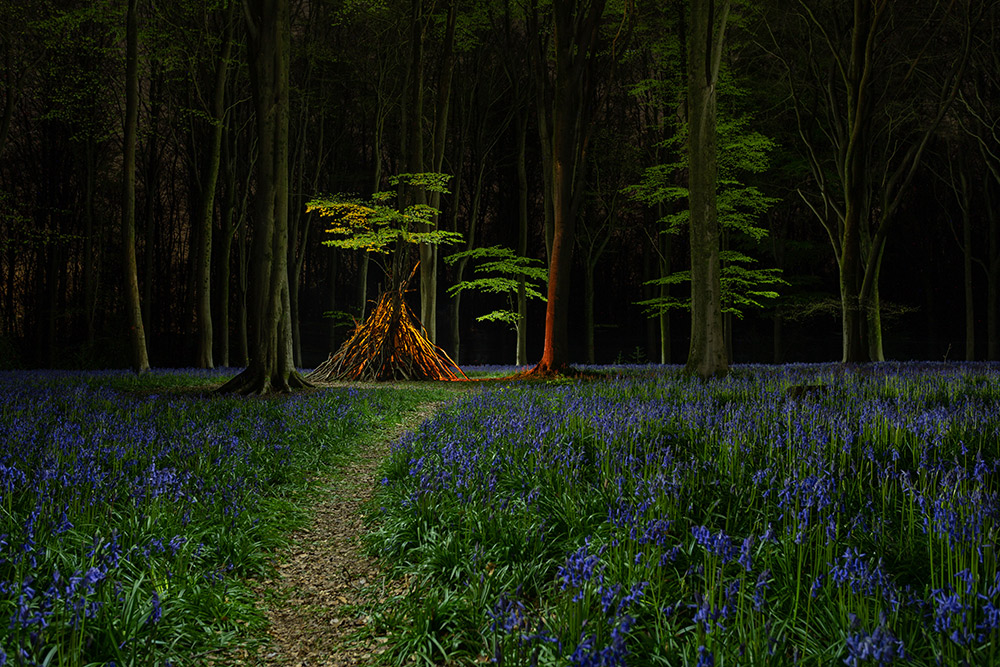
Bluebells at night. ‘I used an orange gelled panel light for the interior, lighting the scene so both the light source and I were hidden’ 343 secs at f/6.3, ISO 200. Image: Phill Fisher
For inspiration he lists Fade to Black Light Art (Instagram: @fade_to_black_light_art), darkredteam (www.darkredteam.es), Mark O’Neill (www.markoneill.co.uk), Darren Pearson (DARIUSTWIN, www.dariustwin.com) and Kim von Coels (www.thekrumbleempire.com), among others.
In recent months, Phill has been lighting static subjects such a memorials, statues, buildings and ruins. ‘I often use a bright torch and walk around the subject lighting it from different angles,’ he says. ‘Although sometimes I mount a light on a drone, which gives the image a different feel as the light is coming from all sorts of different angles.’
Despite the complexities of such a shoot, Phill tries not to plan too much. ‘I usually have an idea in my head, but things can change when you’re actually out on location,’ he admits. ‘The main challenge is getting the image in your head onto the back of your camera, preferably in a single exposure.’ Phill’s desire to get as much as possible ‘right’ in-camera, and in a single exposure, is rare in a field that involves so many variables.
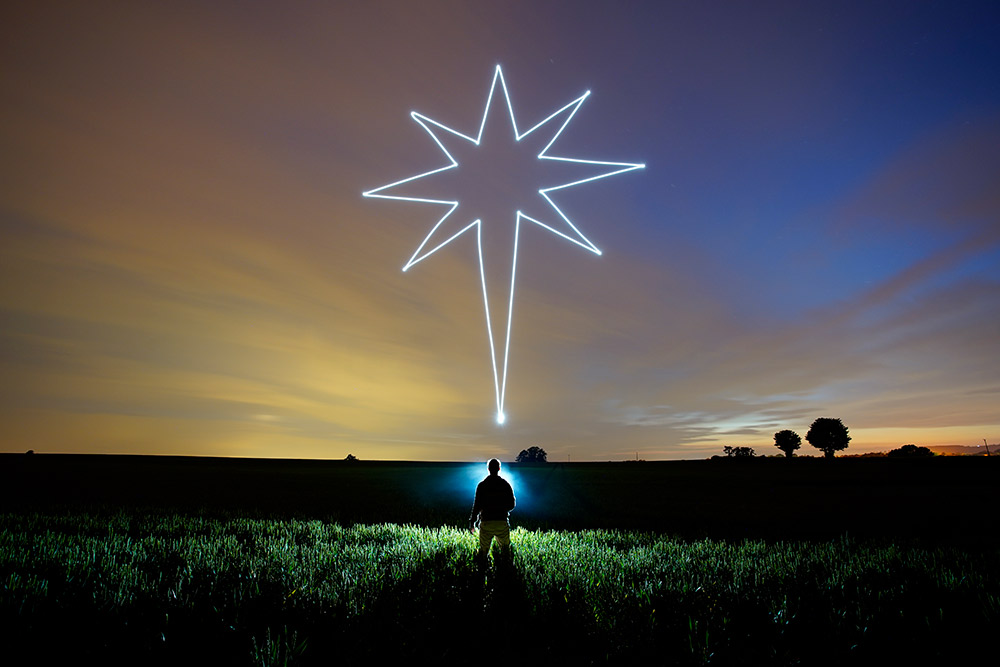
Wandering Star. ‘Drone-mounted lights drew the star shape while I stood in front of a small panel light centre frame for almost four minutes’ 212 secs at f/6.3, ISO 200. Image: Phill Fisher
However, he assures me it is possible with practice. ‘Don’t get down if the first long exposure you make doesn’t work for you,’ he urges. ‘It takes lots of practice and patience – the more you do it, the more you get a feel for it.’
The equipment Phill uses depends on the type of image he’s creating, but there are a few things that remain constant. ‘I use a tripod and a remote release as I tend to shoot in bulb mode,’ he explains. ‘You don’t need any fancy gear to get started, just a camera capable of 30-second exposures/bulb mode and a tripod.’ Of course, you also need a light source and over the years Phill has learnt that it’s often best to keep things simple.
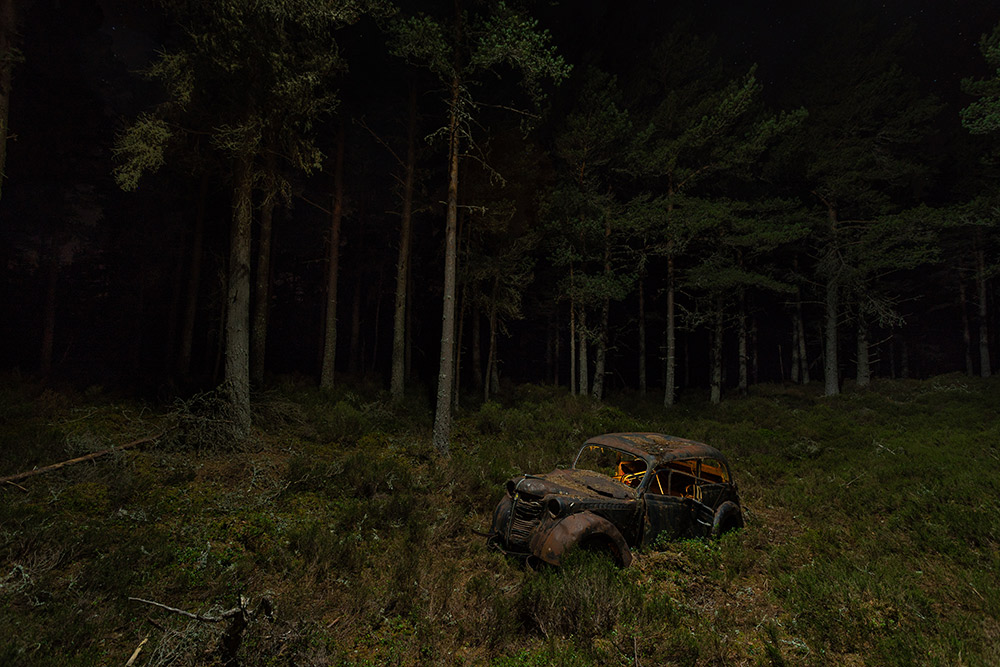
Deep in the Woods. ‘I used drone-mounted lights to illuminate the scene from above’. 20 secs at f/6.3, ISO 400. Image: Phill Fisher
‘I used to have a load of DIY kit – my house was full of battery-operated fairy lights,’ he laughs, ‘but as my style changed, my kit became simpler: now I use four to five torches, Lume Cubes for the drone, coloured gels and a couple of other specialised tools.’
Unsurprisingly, light painting is a dream come true for DIY enthusiasts, and Phill suggests that pretty much anything translucent – from shampoo bottles to plastic bags and sweet wrappers – can be transformed into a useful tool. The important thing is to have some creative fun. ‘I have enjoyed the whole journey,’ Phill adds.
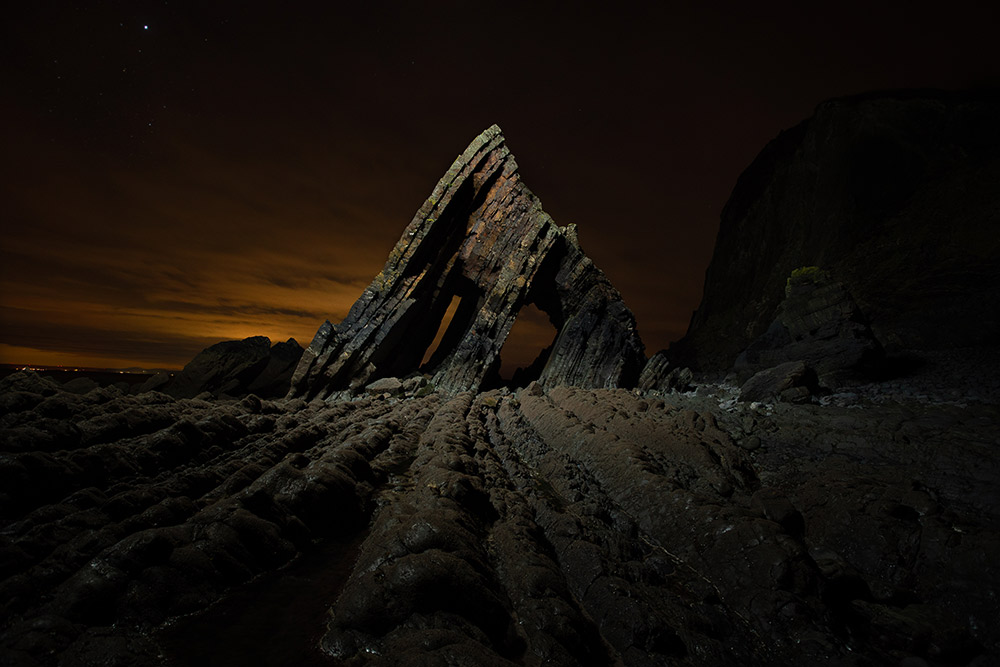
Blackchurch Rock. ‘Again, drone-mounted lights were used here to illuminate the scene’ 30 secs at f/5.6, ISO 800. Image: Phill Fisher
Phill’s top tips
- Watch online tutorials and read blogs on sites such as www.lightpaintingblog.com. Instagram is great for ideas as well.
- Experiment with new techniques, mix them together and see what happens.
- You don’t need fancy gear to get you started. All you need is a camera with bulb mode, a light source and a few translucent objects from around the house.
Further reading:
Light painting: ideas and advice from the experts
Best cheap lighting accessories
How to photograph low light urban landscapes


